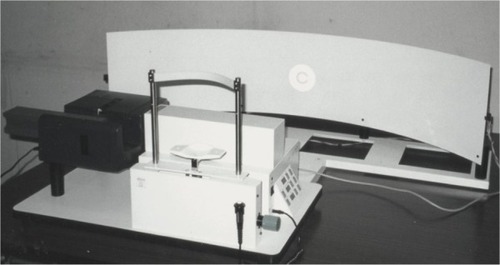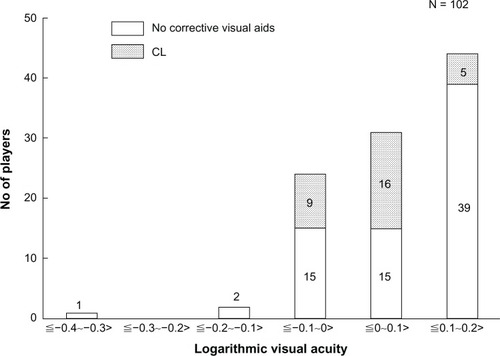Figures & data
Figure 1 Dynamic visual acuity (KOWA Co. Ltd., HI-10).

Figure 2 Kinetic visual acuity (KOWA Co. Ltd., AS-4).
Abbreviation: KVA, kinetic visual acuity.

Table 1 Stratification of players according to their performance level (Groups A, B, and C)
Figure 3 Dstribution of Eva and appropriateness of CL correction.
Abbreviations: SVA, static visual acuity;CL, contact lens.

Table 2 Comparison of Eva, KVA, and DVA among player groups at different performance levels
Table 3 Comparison of KVA between pitchers and fielders (logarithmic visual acuity)